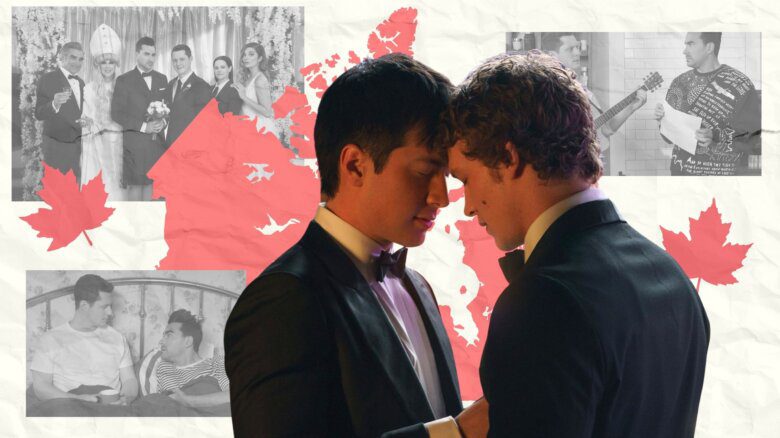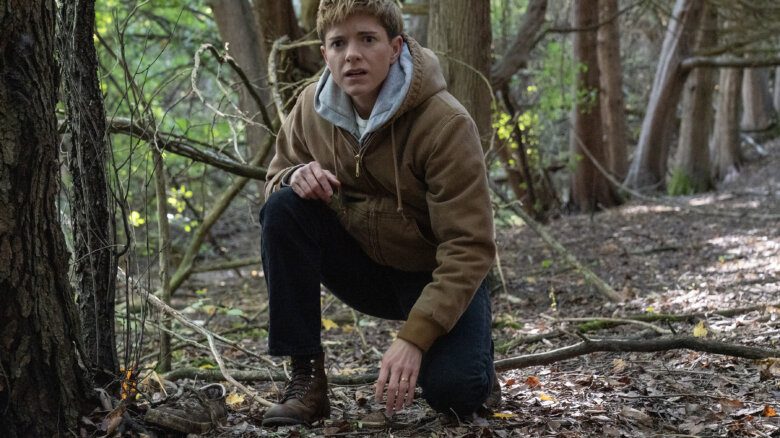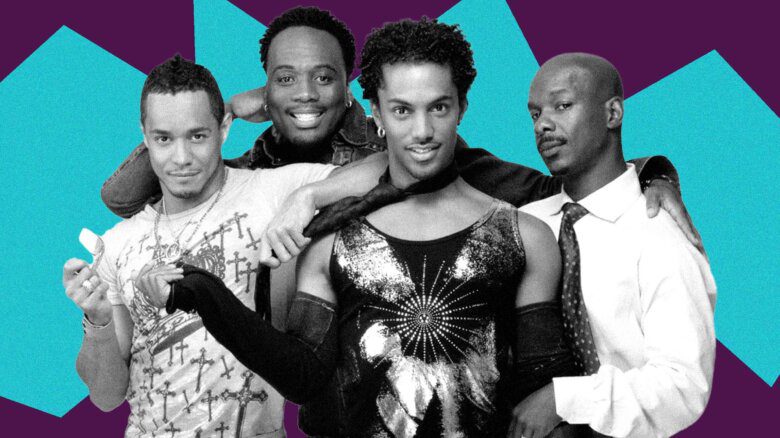How, exactly, did a season of RuPaul’s Drag Race get made during quarantine? Moreover, how did three editions of Drag Race get made during quarantine? We’re currently seeing Season 13 in the U.S. as well as UK Season 2 across the pond, though the latter actually had to suspend its production halfway through because of the initial outbreak. All Stars 6, coming later this year to Paramount+, was also shot under these circumstances. And upcoming seasons—UK Season 3, Drag Race Down Under and more—will also have to contend with the pandemic to varying degrees.
But one season had to be the first, and owing to UK’s extended break (both Season 13 and All Stars 6 were shot during the filming hiatus of the British series), that guinea pig season was Season 13. California’s film production standards for shooting during the pandemic required significant preparation, but what it would actually look like in practice would have to be determined largely on the job. Even without knowing any of the actual details of what went on behind the scenes, you could still understand just how daunting making this season happen would be.
In RuPaul’s Drag Race: Corona Can’t Keep a Good Queen Down, a COVID-19 documentary special that aired this week in lieu of a new Season 13 episode, we get a glimpse into how much work it took. The special is a mixed bag, as the first half is largely too general to really provide insight. There are plenty of confessionals of queens talking about reading the news, seeing their in-person drag shows go digital and assuming Drag Race would not be filming this year. More time than you’d expect is spent on the queens just realizing the gravity of the virus. This ranges from the personal and affecting—Kandy Muse and Olivia Lux sharing their own stories of testing positive—to a more basic shot of someone googling “what is corona virus.”
But the back half of the special is fascinating enough to justify taking a break from the current season’s broadcast to reflect. There are stories about sequestering, the schematics of the workroom and plenty of behind-the-scenes shots and unseen footage. It’s perhaps the most comprehensive look at production that Drag Race has ever offered. It’s just a bummer that’s not the bulk of the special.

Credit: Courtesy of VH1
This is absolutely the Drag Race and reality TV nerd in me talking, but I find every production detail fascinating. The workroom had to change size to include the former Untucked area because it wouldn’t be possible to properly physically distance otherwise. Ru’s workroom visits had to be changed to maintain his individual quarantine bubble. Their confessionals were shot with producers on iPads. Jeffrey Bowyer-Chapman had to be green-screened into the acting challenge! Gottmik, Symone and Denali’s prince wasn’t even on set!
The physical changes were substantial. Camera operators had to stay apart from the queens and each other, and also be divided by plexiglass. (Plexiglass: Not just for dividing judges on the main stage!) The crew wore so much personal protective equipment that the queens say they have no idea what some of the producers look like. One producer even took to using a small pink megaphone to talk to the girls so she could be understood through her protective gear.
Yet the queens say they were living as close to a normal life as possible in quarantine. They could hug, they could be close to each other, they could perform. As Olivia puts it, getting eliminated would mean returning to the outside world and leaving this bubble. It’s kind of dystopian: Not only were queens fighting to stay in the competition, they were also fighting to stay out of lockdown.

Credit: Courtesy of VH1
In a very smart choice, the special devotes a segment to George Floyd’s killing and the subsequent Black Lives Matter protests, which took place the same summer as this season was filmed. We got an in-workroom segment on the subject earlier this season, but any discussion of the state of the world during the time this season was filmed would be incomplete without acknowledging the uprising against racial inequality that happened in 2020.
Drag Race lets the cast’s Black queens lead the conversation, and all of them note just how important their voices were on the show this season. “When I walk into a space as a drag queen—as a Black drag queen—that’s political,” Olivia says. The segment puts into perspective just how front-of-mind the events outside the Drag Race set were for the queens this season.
This included COVID-19 cases, too; Joey Jay notes that while they didn’t have internet access or phones, the TVs in their hotel rooms kept them abreast of how cases were worsening. Those with friends and family working in health care worried about their loved ones as they watched case counts rise. Notably, Symone says she largely shut out the news, preferring to focus on the competition. She wanted to be present for the experience—to embrace it fully.

Credit: Courtesy of VH1
While it’s important to put this special in context—which the talk of rising case counts and the BLM protests do—it still feels self-congratulatory at times. Even the title (a quote from Tina Burner, who says verbatim, “Corona can’t keep a good queen down”) feels too much like a pat on the back. Corona has kept a great many queens down. Not every drag artist was lucky enough to be cast on this season. So many drag performers, as well as clothing designers, make-up artists and others in the entertainment field, have lost income and opportunities during the pandemic. I wish there had been some acknowledgment of the drag world outside of Drag Race.
On the other hand, the special clearly wants to strike a hopeful, triumphant tone. And I get that instinct, I do. But I question the need for a special that celebrates the series itself too much, especially when we are far from being out of the pandemic. Imagine if the special acknowledged that filming this season—while a victory—was ultimately a small one, and grappled with the realities of the ongoing global crisis. It would’ve been a less hopeful documentary, but also a more realistic one.
Like much of the early season, the special is most powerful when it pins its narrative focus on Tamisha Iman. She puts the danger of COVID-19 into perspective by talking about being at risk after surviving cancer. She admits she was glued to the news, realizing how bad it was going to be. She reveals that she tested positive for COVID-19 after filming was over, but, thank god, was asymptomatic.
“I’ve survived corona, I’ve survived Trump, I’ve survived cancer,” she says, adding with a laugh that she won’t be sharing what else she’s survived. Survival is a feat, and for that, Drag Race does deserve kudos. But this special is best when it’s less concerned about those kudos, and most interested when explaining exactly how they pulled it off. The will to survive is important; the ability to survive is something else entirely.
Untucking our final thoughts
✨Dr. Anthony Fauci has made many media appearances this year, but I truly did not expect him to pop up on Drag Race in a congressional testimony clip.
✨Joey Jay (who is quite funny off the cuff throughout this special) offers himself some clarity in hindsight about a lockdown-era video of his, in which he recreated Shangela and Mimi Imfurst’s legendary Untucked fight with his plant: “You were just yelling at your plant.”
✨There’s a bit of talk about the excellent Season 12 finale, both as a sign of hope for these queens and as a potential format for the next season. Kandy admits she thought the entire next season would be shot via webcam.
✨The queens mention running low on wigs while prepping for the show, and indeed there was a significant supply shortage of lace-front hair last year!
✨Very savvy of Symone to use her time in sequester to read GuRu. Just like Bob the Drag Queen quoting Ru’s podcast back to him, having that knowledge can truly come in handy for Symone on set.
✨“I met Anne Hathaway, you can’t tell me any different.” Olivia is determined to have her celebrity meet moment.
✨The unseen footage of Ru just talking to the queens about anything during the workroom segments is so funny to me. As we saw on Drag Race UK, Ru clearly doesn’t handle being quarantined that well, so I’m sure he was thrilled to just have other people to chat with. Note him doing the Blair St. Clair shimmy at one point!
✨To leave on a lighter note: I cannot stop laughing at the idea of LaLa Ri cracking herself up in her own confessionals… all while talking to an iPad. The wonder of technology.
Hey kitty girls, join us every Friday at 4 p.m. EST for our livestream Kiki with Kevin.
The next episode of RuPaul’s Drag Race airs Friday, March 5, at 8 p.m. EST on VH1 in the U.S. and on Crave and OUTtv in Canada.


 Why you can trust Xtra
Why you can trust Xtra


